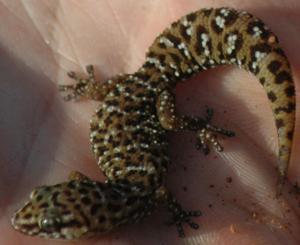Biology and behavior
No species of reptile migrates. This is because reptiles are adapted for sitting tight and waiting for conditions to change. As the environment becomes colder, reptile’s decrease in body temperature. This causes their metabolic rate to decrease, and reptiles therefore become inactive until the temperature increases again. They hibernate in the sense that they slow their metabolic rates so that they become inactive in difficult times.
Meals last reptiles ten times longer than they do mammals and birds. This is because birds and mammals have metabolic rates that are much higher than those of reptiles. This is one of the reasons why reptiles are less active than other animals. Turtles however, do travel thousands of kilometers per year.
Many reptiles are able to regulate their body temperature within a small range. They can also regulate their heart rate and reduce the transport of heat around the body. Reptiles are able to bask in the sun to gain heat (heliothermy) and can flatten their bodies to get maximum contact with a warm surface (thignothermy). Many snakes maintain their body temperature around 32degrees when possible, while lizards select temperatures from 36 to 42degrees depending on their habitat. Because of their slow lifestyles, reptiles can live for up to 150 years, even though that is only really the case in tortoises.
Reproduction
Crocodiles, terrapins, tortoises and some species of lizard have what we call “Temperature-dependant Sex Determination”, where the sex of young is determined by the temperature of the eggs before they hatch. The temperature also affects growth rate, body size and survival.
Most reptiles lay eggs but a few species of snake and lizard give birth to live young. Most reptiles also don’t show any parental care but some species stay with their young until they are born and others accompany them for weeks after birth. Live birth (viviparity) has arisen through the retention of eggs in the oviducts.
Growth and shedding
Growth rate in reptiles is determined by temperature and the availability of food and water. In tough times, growth may even become negative. Some reptiles mature within a year but it takes some 10-20 years to become sexually active. It all depends on their lifespan.
Reptiles shed their skin as they grow. Some only lose small flakes of skin while others lose their complete outer covering at once. The cycle consists of a long resting phase (from days to months). This is followed by cell proliferation and differentiation (about 14 days). In snakes and lizards with fused, transparent eyelids, proliferation will be revealed by a bluish or milky hue over the eye. This may cause them to have impaired vision.
Most reptiles never stop growing throughout their lives, but this is dependant on food availability and temperature. The rate of growth slows down though as they get older.
Part #3 will detail reptile’s senses and more about their way of life.



Learned some new things with this interesting post, thanks! Sounds like the good life – plodding or slithering along slowly – baksing in the sun and having a long life (if you are not eaten by something). The Sand Gecko is really nice.
Hi Luke, I have just posted about Snakes (part 1) on my blog, Fascinating Animals. Also, I look forward to Part 3 of your Reptiles article series, about reptile senses. Best wishes, Celine